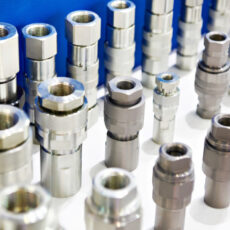 Coupling Your Way to Hydraulic Power: The Ultimate Guide
Coupling Your Way to Hydraulic Power: The Ultimate Guide
Hydraulic power is essential for many industrial applications. One of the ways to transfer power in hydraulic systems is through coupling. Couplings are mechanical fittings used to connect two shafts or machines for the transmission of power.
The proper coupling selection can have a significant impact on the performance and reliability of the hydraulic system. In this ultimate guide, we’ll explore everything you need to know about coupling your way to hydraulic power.
Types of Couplings
There are several types of couplings used in hydraulic systems, and each type has unique features that make it suitable for specific equipment and applications. Here are some of the most common couplings used in hydraulic systems:
1. Jaw couplings – Jaw couplings are simple, flexible couplings that are easy to install and use. They can be used with high torque and misalignment applications.
2. Gear couplings – Gear couplings consist of two interlocked gears that transmit power between two shafts. They are used in high-speed and high-torque applications.
3. Fluid couplings – Fluid couplings use a fluid drive to transfer power between two units. They are used in applications where torque needs to be controlled, such as in conveyors and crushers.
4. Magnetic couplings – Magnetic couplings transfer power between two units using magnetic fields. They are used in applications where there needs to be no mechanical connection between the two units.
5. Cone couplings – Cone couplings are designed to transmit torque through friction. They feature two tapered surfaces that mate to transmit power between two shafts.
Factors to Consider When Choosing a Coupling
When selecting a coupling for a hydraulic system, there are several factors you need to consider. Here are some of the most important factors:
1. Operating conditions – The operating conditions of the hydraulic system will determine the type of coupling you need. The amount of torque, temperature, and pressure will all play a role in selecting the right coupling.
2. Misalignment tolerance – The coupling you choose should be able to handle any misalignment present in the system. There are several types of couplings designed to handle different levels of misalignment.
3. Installation and maintenance – The coupling you select should be easy to install and maintain. This will help reduce downtime and keep your system running smoothly.
4. Cost – The cost of the coupling should be considered in relation to the overall system cost. While cheaper couplings may save you money initially, they may have a shorter lifespan and end up costing more in the long run.
Guidelines for Coupling Installation
Proper coupling installation is key to maintaining the performance and reliability of the hydraulic system. Here are some guidelines for coupling installation:
1. Cleanliness – Ensure that all parts are clean and free of debris before installation. Dirt and debris can reduce the efficiency and lifespan of the coupling.
2. Alignment – Proper alignment is essential for the efficient transfer of power and to avoid premature failure of the coupling. The coupling should be aligned with a precision alignment tool.
3. Torque – The bolts or nuts should be tightened to the correct torque specification. Over-tightening or under-tightening can cause premature failure of the coupling.
4. Lubrication – The coupling should be lubricated regularly to reduce wear and prevent corrosion. The type of lubrication used should be suitable for the conditions of the hydraulic system.
Maintenance and Troubleshooting
Proper maintenance is essential to ensure that the coupling continues to function correctly and prevent premature failure. Here are some maintenance and troubleshooting tips:
1. Inspect the coupling regularly for signs of wear or damage.
2. Check the alignment of the coupling periodically.
3. Lubricate the coupling as recommended by the manufacturer.
4. Inspect the bolts or nuts for tightness periodically.
5. If the coupling is making unusual noises or vibrations, it may be a sign of misalignment or wear.
6. If the coupling fails, inspect the components to determine the cause and take corrective action.
Final Thoughts
Coupling your way to hydraulic power is a crucial aspect of hydraulic systems. The selection, installation, and maintenance of the coupling should be done with care to ensure that the hydraulic system performs efficiently and reliably. By considering the factors discussed in this guide and following the guidelines for installation and maintenance, you can ensure that your hydraulic system runs smoothly and efficiently.

